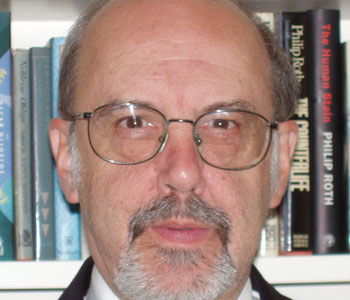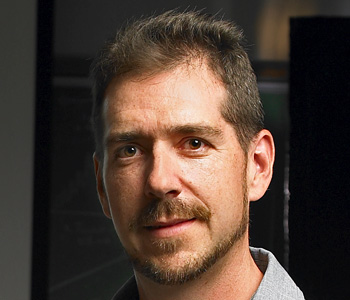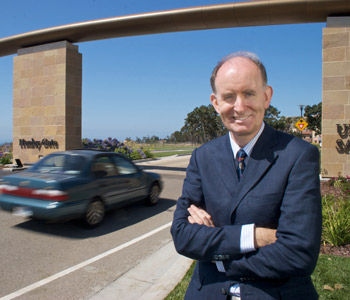Gary Stuart
Innocent Until Interrogated: The True Story of the Buddhist Temple Massacre and the Tucson Four
University of Arizona Press
330 pages, 6 x 9 inches
ISBN 978 0816529247
My book is a stark but comprehensive look at what really happened following the discovery of two seemingly unrelated cases of murder near Phoenix, Arizona, in 1991.
The first case involved nine victims. Six Buddhist monks, a nun, and two temple workers were executed at a monastery west of Phoenix on the night of August 9–10, 1991.
In the second case, someone shot Alice Marie Cameron twice in the back with a nine-millimeter handgun, for the change in her purse, at a remote public campground north of Phoenix the following October 17.
Officers from the Maricopa County Sheriff’s Office (MCSO) investigated what they erroneously thought were unrelated cases.
Intense political and media pressure to solve a mass murder, coupled with a lack of experience on the part of the commanders at the MCSO, created a political and personal nightmare in both cases.
Overlooking vital clues in the first case, the MCSO rounded up four men who were identified by a mental patient in the Tucson Psychiatric Institute and coerced four patently false confessions from them.
That ignoble effort led to the extraction of another coerced false confession from a hapless mental patient in the second case. He had been out of the hospital for only a few days and just happened to be staying at the campground where the second murder took place—but he was looking for attention.
The cases really began to unravel when the sheriff’s office belatedly checked the ownership of a gun from a presumably unrelated case. They’d had the gun in their possession for six weeks without submitting it to the state crime lab for ballistics analysis. It turned out to be the murder weapon.
This led directly to the arrest of three teenage boys from Avondale. All three lived near the Buddhist Temple, and one of them had close connections to the temple. Two of the boys confessed. Fourteen months later, the prosecutor discovered that one of the two was also the killer in the campground case.
The title of my book, Innocent Until Interrogated, is a nod to what happened to the innocent men rounded up in Tucson and transported in handcuffs to the MCSO’s interrogation chamber in Phoenix. The book parses and crosschecks what really happened, who cared about it, and why the wheels of justice collapsed.
But there is more to this story than just false confessions.
In July 1994 a seventeen-year-old boy stood trial in the Buddhist Temple case. The jury decided he was only a follower and acquitted him of premeditated murder while finding him guilty of felony murder. The judge rejected the death penalty, instead sentencing him to nine consecutive life sentences.
In February 2010 the U.S. Circuit Court of Appeals for the Ninth Circuit decided that the now-thirty-six-year-old convict had also given a coerced confession, and the court ordered the state to take reasonable measures to retry him without his coerced confession.
The book is about false and true police-induced confessions.

False confessions are a daily reality, not an invention of the liberal media or an artifact of a few rogue cops trying to close a case ... wrongful convictions based on false confessions have become epidemic.
With regard to the larger picture, my book chronicles moral and legal conflicts, political intrigue, retribution, and drastic consequences—all of which were unintended.
There is a dark evil here, smoldering under a blanket of law and order.
The central driver in the first case was the MCSO’s utter refusal to accept the reality that two twitchy teenagers were capable of the brutality that resulted in the stark execution of nine helpless people.
In the second case, the MCSO saw evidence of guilt rather than symptoms of mental illness as they coerced a confession out of a man on his way to see his psychiatrist. He was an easily led camper, not a killer.
I wrote this book to help educated and inquiring adults get over the mentality that prevents many people from believing that innocent suspects can actually confess to crimes they did not commit.
A few confess because of some deep-seated compulsion—often for publicity, sometimes out of stupidity, and almost always out of fear. The suspects profiled in my book confessed because the police induced them to confess. It happens too often and in every state. And we let it happen because we do not believe it is possible.
But it does happen—even several innocent people do confess falsely to accusations of even mass murder.
This is not a ponderous textbook. The book is scholarly, I hope, but not dogmatic. And I did not let the law get in the way of the facts.
I have avoided most of the academic jargon that surrounds books, including mine, about the law. And this is, partly, because one of America’s greatest constitutional lawyers, Larry Hammond, urged me to write in a way that would bring average Americans into America’s police stations.
Through this simple lens, the reader might come face to face with a contrived confession of guilt from a completely innocent person. I hope this may contribute more to the justice system than all the law reviews and law books I’ll ever write.
If I could gently nudge a browser in a bookstore to open Innocent Until Interrogated, I’d probably point her to the text on page 221.
It’s only a few lines about what happens when someone kills, someone else investigates the killing, a prosecutor brings charges, and a judge empanels a jury to hear the case.
I begin with the obvious:
Murder trials fascinate the public, and many people see a confession to murder as the ideal civic solution. The perpetrator takes responsibility, and the public sleeps soundly. But murder trials rarely examine how the confession came into being: whether it is a product of the suspect’s guilty mind or of the interrogators’ will and perseverance.
Well-meaning jurors, like well-intentioned cops, sometimes fall victim to tunnel vision.
Cops are tough, and they know the guy on the other side of the interrogation table is just as tough. The perp has been Mirandized, so let’s get on with it. In the atmosphere of suspicion that pervades the interrogation room, the cop comes to believe—despite the denials—that he did it. That belief grows and clouds the cop’s vision until that’s all he can see.
And so it is with juries. A juror does not have any training for the job of being a juror. Jurors don’t have manuals to guide them. They have only a judge giving them instructions and expecting them to do their best.
In the trial presented in this book, the State offered as evidence all seventeen of the audiotapes made during the interrogation of one defendant. The jury heard his juvenile voice from high-fidelity headsets as he confessed to being there when the monks were killed. They heard him admit to planning the war game he said he thought was happening. They heard him admit to being in the temple when his two friends killed the monks. They heard him deny killing anyone. He confessed to being there, and the judge said that that was enough to find him guilty of felony murder. So they convicted him.
But it was his words that convicted him, not his actions. And it was the audiotape that the jurors heard, not him. He never took the stand, never uttered a sound in open court for the three months of the trial. Did it matter? Who cares, some may have said. A confession is a confession, right?
But this jury, this particularly thoughtful jury, looked deeply at both the defendant and his interrogators. They acquitted the defendant of premeditated murder, based on his audiotape, while rejecting the accusations made by his “co-conspirator,” who was not on trial. That juvenile got a lenient plea bargain as the quid pro quo for testifying against his former high-school buddy.
The jury figured out what the investigators never did: It’s not always the confessor who did the deed; sometimes it’s the accuser.
In the police station, the interrogators were the accusers. At trial, those same accusers represented the people of Arizona at the prosecution table.
But this jury looked beyond the audiotapes. They measured the State’s witnesses. They balanced the State’s power against the defendant’s seeming helplessness in the interrogation chamber. Then they asked themselves the important question: Is this confession true, and was it made voluntarily?

Americans need to be wary of confessions in general and incensed by the ready acceptance of police-induced confessions by investigators, prosecutors, judges, and juries.
As I say in the Epilogue, “The ordeals of Leo Bruce, Mike McGraw, Mark Nunez, Dante Parker, George Peterson, and Robert Armstrong are classic examples of the way some law enforcement agencies manipulate suspects, exploiting their vulnerability or their naiveté while ignoring hard evidence. Americans need to be wary of confessions in general and incensed by the ready acceptance of police-induced confessions by investigators, prosecutors, judges, and juries.”
I’m hardly alone in thinking that both true and false police-induced confessions raise important policy questions.
In 2009, Professors Saul M. Kassin, Steven A. Drizin, Thomas Grisso, Gisli H. Gudjonsson, Richard A. Leo, and Allison D. Redlich collaborated in publishing a 118-page white paper modestly titled Police-Induced Confessions: Risk Factors and Recommendations.
These six highly regarded academics are among the most frequently published authors on the subject. Their combined work over the past two decades confirms what the academic world knows well—but the rest of the world has yet to perceive: Wrongful convictions based on false confessions have become epidemic.
Their data prove the obvious: “False confessions raise serious questions concerning a chain of events by which innocent citizens are judged deceptive in interviews and misidentified for interrogation; waive their rights to silence and to counsel; and are induced into making false narrative confessions that form a sufficient basis for subsequent conviction.”
They urge us to commission a broad review of the state of the science on interviewing and interrogation. They suggest the need “to identify the dispositional characteristics (e.g., traits associated with Miranda waivers, compliance, and suggestibility; adolescence; mental retardation; psychopathology) and situational-interrogation factors (e.g., prolonged detention and isolation; confrontation; presentations of false evidence; minimization) that influence the voluntariness and reliability of confessions.”
In other words, false confessions are a daily reality, not an invention of the liberal media or an artifact of a few rogue cops trying to close a case.
Interrogation techniques and the extraction of confessions are subject to historical, cultural, political, legal, and other contextual influences. But my book does something that the most ambitious academic papers cannot do: It establishes the connection between the suspect’s submissiveness and the interrogator’s dominance as a concrete narrative, not as a policy directive.
My wish for Innocent Until Interrogated is simple: I would like to change the public’s mind.
We Americans should quit thinking of ourselves as being too smart and too strong to be manipulated into confessing to crimes we did not commit. It happened to the five men profiled in the book. It could happen to any one of us.




We don't put paywalls. We don't distract you with ads. We don't sell your data.
Please help to keep this running!